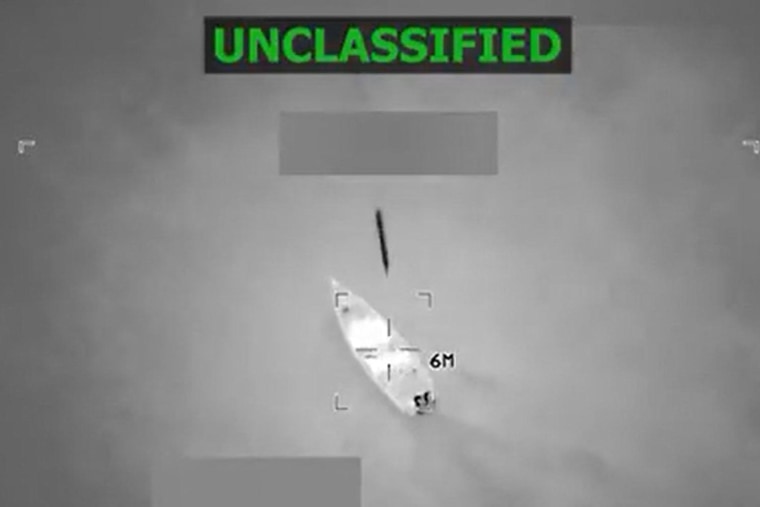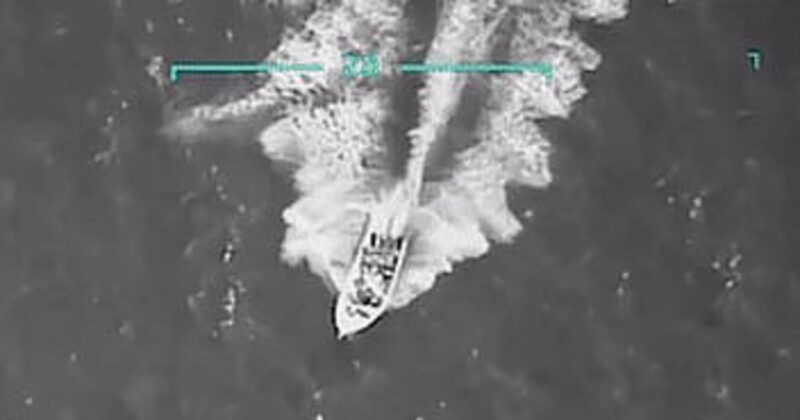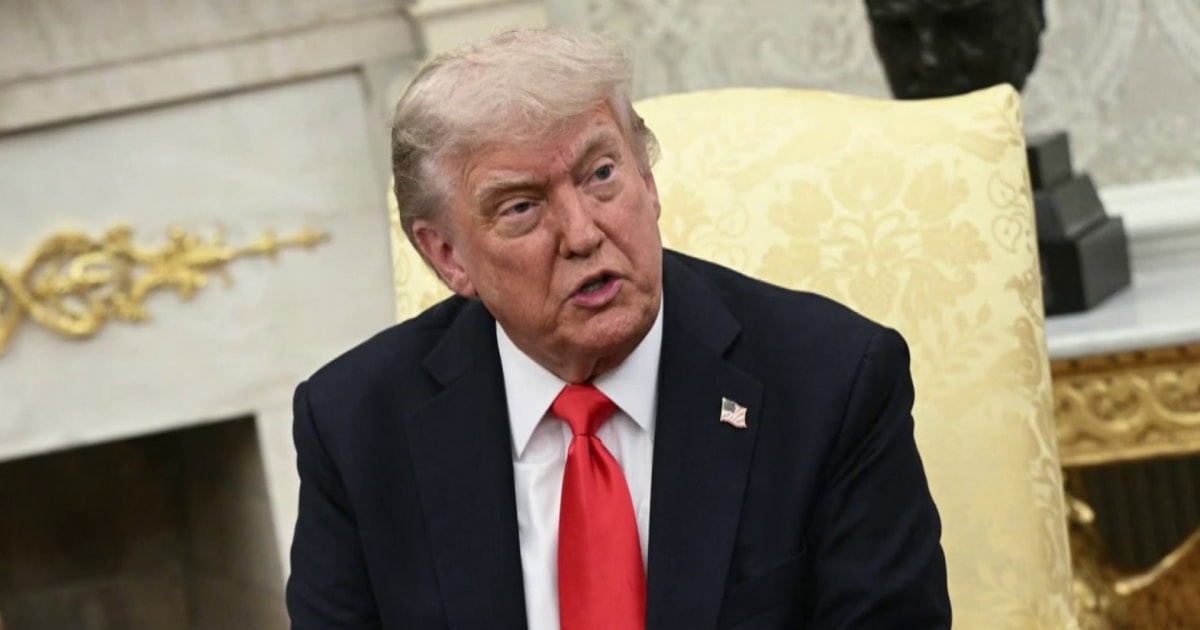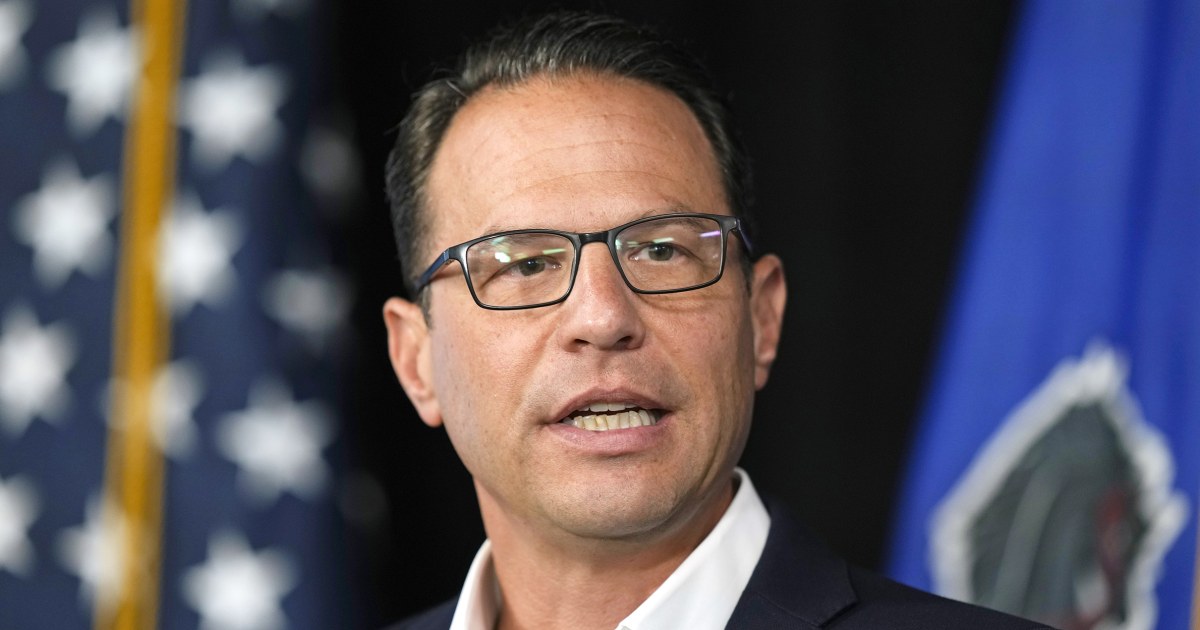President Donald Trump and his Pentagon chief say U.S. military strikes on suspected drug boats in waters off Latin America are saving lives by preventing narcotics from reaching America’s shores.
But drug cartels operating vessels in the Caribbean, where roughly 50% of the airstrikes have taken place, are mainly moving cocaine from South America to Europe — not to the United States, according to current and former U.S. law enforcement and military officials as well as narcotics experts. And the deadliest drug of all, fentanyl, is almost exclusively smuggled over land from Mexico, the officials and experts say.
The realities of the drug trade in Latin America call into question part of the administration’s stated rationale for its unprecedented military campaign against suspected narcotics smuggling boats, and whether it will have any significant effect on the supply of narcotics in the United States, according to the officials and experts.
“Fentanyl is not coming out of Venezuela. Fentanyl comes from Mexico,” said Christopher Hernandez-Roy, a senior fellow at the Center for Strategic and International Studies think tank in Washington. “What’s coming out of Venezuela is cocaine.”
And most of that cocaine is no longer headed to the U.S., according to Hernandez-Roy, who co-authored a 2023 report on the subject.
The cocaine market in Europe has “exploded” in recent years, he said, because it’s “more lucrative and there’s less of a chance, at least at some levels of the supply chain, of facing prison time.”
A U.S. official with expertise on counternarcotics efforts offered a similar assessment, saying cocaine accounts for about 90% of the drugs coming from Venezuela and is “almost all destined for Europe.”
White House spokeswoman Anna Kelly responded in a statement.
“All of these decisive strikes have been against designated narcoterrorists bringing deadly poison to our shores, and the President will continue to use every element of American power to stop drugs from flooding into our country and to bring those responsible to justice,” Kelly said.
Pentagon spokesman Sean Parnell said “our intelligence did indeed confirm these boats were trafficking narcotics destined for America.”
“That same intelligence also confirms that the individuals involved in these drug operations were narco-terrorists, and we stand by that assessment,” he added.
Since Sept. 2, the U.S. military has carried out 21 lethal strikes on boats that the administration says are ferrying narcotics, killing more than 80 people, according to the Pentagon.

The administration has come under criticism at home and abroad over the legality of the boat strikes, with lawmakers from both parties expressing concerns that the attacks violate U.S. and international law. Some NATO allies have distanced themselves from the strikes and the United Kingdom has withheld relevant intelligence on Latin American drug smuggling at sea over concerns the campaign may be illegal, NBC News has previously reported.
The Trump administration has defended the aerial attacks as a legal action against a threat to national security and an effective approach to fighting narco-traffickers.
Trump has said each boat sunk by the U.S. military saves “25,000 lives” by stopping fentanyl and other narcotics from reaching U.S. shores. And in a social media post earlier this month, Defense Secretary Pete Hegseth said the U.S. military would “find and terminate EVERY vessel with the intention of trafficking drugs to America to poison our citizens.”
Rahul Gupta, who served as director of the White House Office of National Drug Control Policy in the Biden administration, said most of the trafficking boats in the Caribbean are carrying cocaine bound for Europe, and the people on board tend to be young and desperate for work.
“They’re recruiting young people, impressionable young people, so they can do these runs for $100, $500, $1,000 back and forth,” Gupta said.
The drug runners at sea are often between 15 and 24 years old and the cartel leadership views them as expendable, Gupta said. For the cartels, “there is no message being sent because they really don’t care about these people,” he said.
‘Go fast’ boats
Over the past several years, fentanyl and other synthetic opioids have accounted for the vast majority of overdose deaths in the U.S. In 2023, roughly 77,000 Americans died from synthetic opioids, primarily fentanyl, which accounted for 76% of all overdose deaths, according to the Centers for Disease Control and Prevention.
Highly powerful but easily concealed, fentanyl is mostly transported not by boat in the Caribbean but over land across the U.S.-Mexico border, according to experts and U.S. government reports.
Cocaine largely arrives to the country on boats that speed across the Pacific and originate from Colombia or Ecuador.

Trump has ordered a buildup of U.S. forces as part of his campaign against Latin American drug cartels, with an aircraft carrier and other warships and aircraft deployed in the Caribbean. But there is no similar naval buildup on the western side of South America in the eastern Pacific, the main route for cocaine into the United States.
Drug runners from Venezuela typically take 60-foot “go fast” boats to a stop in the Caribbean, where the cargo is transferred to larger freighters and shipped on to European ports, sometimes via West Africa, the officials and experts say. Smaller amounts are smuggled aboard commercial airliners by human “mules.”
One popular route has the smugglers heading to Trinidad and Tobago, a short, 7-mile boat ride from the Venezuelan coast, according to the officials and experts.
The traffickers take advantage of uninhabited islands and European overseas territories in the Caribbean. The British, French and Dutch islands offer direct air and maritime routes to Europe and have commercial and familial ties to the European continent.
A kilogram of cocaine costs about $28,000 in the United States, but the same amount fetches roughly $40,000 on average in Europe and as much as $80,000 in some European countries, according to a report funded by the Norwegian government.
William Baumgartner, a retired Coast Guard rear admiral and former chief counsel to the service, said the strikes in the Caribbean will likely have no major effect on the flow of fentanyl into the United States.
“These boats do not carry fentanyl. They are carrying cocaine,” Baumgartner told reporters in a virtual briefing last week.
Baumgartner and other former military and law enforcement officials say the lethal strikes also deprive the United States of valuable intelligence about the cartel networks and their operations, as there is no opportunity to collect forensic evidence from seized narcotics or interrogate the smugglers.
“Most of our intelligence comes from people that we capture on these vessels,” Baumgartner said. But if the U.S. kills or repatriates the people on board, “we actually hurt ourselves and our effectiveness in the long term,” he said.
Past counternarcotics efforts have often merely forced the cartels to adapt and reconfigure their smuggling routes, experts said.
Vanda Felbab-Brown, a senior fellow at the Brookings Institution, said the U.S. military strikes in the Caribbean were targeting boats that almost certainly were ferrying cocaine to Europe, and would not affect the vast drug problem in the United States. The attacks likely will not deter the cartels but only prompt them to choose different routes or methods, as the potential profit continues to provide a strong incentive to keep smuggling, Felbab-Brown said.
Gupta, the former drug policy chief, said the administration’s approach amounted to a tactic without a strategy, with little prospect for success given that there are dozens of drug smuggling boats in the Caribbean on any given day.
The strikes are “symbolic,” Gupta said. “But symbolism isn’t going to treat people with addiction. Symbolism isn’t going to dismantle cartels, their logistics network, their way to make money, their whole system that is there.”








